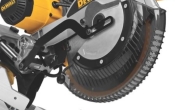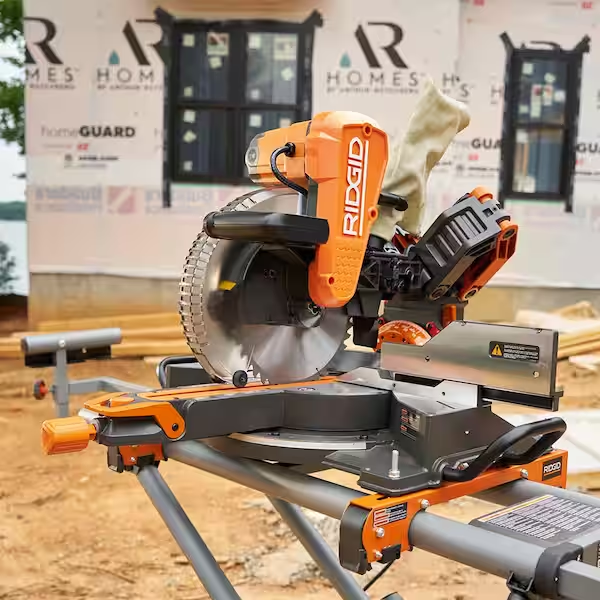
The Circular Saw: A Revolution Powered by Innovation
The circular saw, a ubiquitous tool in construction and woodworking, boasts a rich history filled with ingenious inventors and incremental improvements. While a single inventor isn’t credited with its creation, the circular saw’s journey from a rudimentary concept to a modern marvel is a testament to human ingenuity.
Early Incarnations: From Windmills to Sawmills
The earliest whispers of the circular saw concept can be traced back to the 18th century. There are competing claims for its origin. Some credit Samuel Miller, a British sailmaker, who received a patent in 1777 for a “saw-mill” powered by a windmill. However, debate surrounds whether Miller invented the circular blade itself or simply the machine that utilized it.
Across the English Channel, in Germany, Gervinus is credited with inventing the circular saw around 1780. Details about his invention remain scarce, but it highlights the international influence on the tool’s development.
Shaker Innovation: Tabitha Babbitt and the Circular Saw for Sawmills
The story of the circular saw becomes more concrete with Sarah “Tabitha” Babbitt, a member of the Shaker religious community in the United States. While the Shakers are renowned for their craftsmanship and ingenuity, Babbitt’s contributions stand out. Between 1810 and 1813, she is credited with inventing the first circular saw specifically designed for sawmill use.
Frustrated by the inefficiency of traditional up-and-down saws, Babbitt envisioned a circular blade that could continuously cut. Her ingenuity shone through as she reportedly attached a circular blade to a spinning wheel, utilizing the pedal to power it. This innovation not only reduced wasted motion but also increased cutting efficiency significantly.

Evolution and Refinement: The 19th and Early 20th Centuries
Babbitt’s invention marked a turning point, but the circular saw continued to evolve throughout the 19th and early 20th centuries. The focus shifted towards portability and functionality. In 1895, Albert Emerson and Charles DeWalt, co-founders of DeWalt, received a patent for a circular saw powered by an electric motor. This innovation paved the way for the first truly portable circular saws, revolutionizing construction work.
However, these early electric saws were cumbersome and lacked the precision needed for intricate cuts. Inventors like Black & Decker addressed these issues in the early 20th century, developing lighter and more user-friendly models.
The Rise of Specialized Saws and Modern Advancements
The 20th century witnessed a surge in specialized circular saws designed for specific tasks. In 1923, Edmond Michel invented the worm-drive saw, known for its power and durability, ideal for heavy-duty construction projects. Meanwhile, Raymond DeWalt, son of company co-founder Charles DeWalt, created the first radial arm saw in 1922. This innovation offered greater control over cutting depth and direction, making intricate cuts more manageable.
The latter half of the 20th century saw advancements in materials, safety features, and power sources. Circular saw blades transitioned from steel to carbide-tipped variants, offering increased longevity and cutting performance. Manufacturers prioritized safety by incorporating blade guards, riving knives, and electric brakes. Additionally, cordless circular saws powered by lithium-ion batteries emerged, enhancing portability and convenience for DIYers and professionals alike.
The Circular Saw’s Lasting Impact
Today, the circular saw remains a cornerstone in the toolboxes of carpenters, construction workers, and DIY enthusiasts. Its versatility allows for ripping lumber, making crosscuts, and performing bevel cuts. The evolution of the circular saw reflects a continuous dialogue between inventors, manufacturers, and users. As new materials and construction techniques emerge, the circular saw is certain to adapt and continue its reign as an essential tool.

Beyond the Basics: A Look at Specialized Circular Saws
While the standard circular saw excels at a wide range of tasks, specialized variants cater to specific needs. Here’s a glimpse into some popular variations:
- Worm-drive saws: Renowned for their power and durability, these saws are ideal for heavy-duty ripping and demolition projects.
- Mini circular saws: Compact and lightweight, these saws are perfect for intricate cuts and detailed woodworking projects.
- Track saws: Offering unparalleled precision, track saws glide along a pre-defined track, ensuring perfectly straight cuts.
- Table saws: Essentially a stationary circular saw mounted on a table, table saws provide a stable platform for ripping long boards and making precise cuts.
Explore the influence of the circular saw on other power tools
The circular saw’s impact extends far beyond its own revolution in cutting. Its design principles and success paved the way for a wave of power tools, influencing both handheld and stationary options. Here’s how the circular saw created a ripple effect in the world of construction and woodworking:
Handheld Power Tools:
-
Portable Powerhouses: The portability achieved with the electric circular saw inspired the development of other handheld power tools. Drills, sawsaws (reciprocating saws), and sanders all adopted similar electric motor and gear reduction principles, making them more portable and user-friendly compared to their traditionally bulky, corded counterparts.
-
Specialization Breeds Efficiency: The success of specialized circular saws, like the worm-drive saw for heavy-duty tasks and the mini circular saw for intricate cuts, inspired the creation of specialized power tools in other categories. Impact drivers for forceful fastening, jigsaws for intricate curves, and oscillating multi-tools for diverse cutting and sanding tasks all owe a debt to the concept of specialized power tools pioneered by the circular saw.
Stationary Power Tools:
-
The Birth of the Table Saw: Perhaps the most direct descendant of the circular saw is the table saw. Essentially a circular saw mounted on a stable platform with a feeding mechanism, the table saw allows for precise rip cuts and crosscuts on long boards, tasks that were previously difficult or hazardous with handheld saws.
-
Beyond the Table Saw: The concept of a rotating blade mounted on a stationary frame influenced the development of other stationary power tools. Miter saws offer precise angled cuts, radial arm saws provide greater control over depth and direction, and band saws tackle curved cuts with ease. These tools all share the core principle of a rotating blade used for efficient cutting, a concept popularized by the circular saw.
Related Inventions:
-
Saw Blades: The development of specialized saw blades for the circular saw, like carbide-tipped blades for increased durability, spurred advancements in saw blade technology across the board. This benefited other power tools that utilize saw blades, such as reciprocating saws and jigsaws.
-
Power Source Evolution: The shift from corded electric saws to cordless, battery-powered options, pioneered by the circular saw, became a trend across the power tool industry. This focus on portability and convenience continues to drive innovation in power tool batteries and charging technology.
Reflect on the long-lasting legacy of the circular saw
A Long-Lasting Legacy:
-
Revolutionized Construction: Before the circular saw, construction relied on laborious, up-and-down saws. Babbitt’s invention and subsequent advancements in portability made cutting lumber faster and easier, forever changing construction practices.
-
Enduring Versatility: The circular saw’s ability to rip, crosscut, and bevel makes it a one-stop shop for many cutting needs. Specialized saws further enhance this versatility, catering to everything from delicate woodworking projects to heavy-duty demolition.
Continued Relevance in Modern Times:
-
Adapting to New Materials: The circular saw has kept pace with the introduction of new building materials. The shift from steel blades to carbide-tipped ones exemplifies this adaptability, ensuring the saw can handle even the toughest cuts.
-
Safety Enhancements: Modern circular saws prioritize safety with features like blade guards, riving knives, and electric brakes. These advancements demonstrate the ongoing commitment to user safety while maintaining the saw’s functionality.
-
Cordless Convenience: The rise of cordless, lithium-ion battery-powered circular saws offers unmatched portability and convenience. This caters to the growing trend of DIY projects and allows professionals greater flexibility on the job site.
The circular saw’s story is far from over. As technology advances, we can expect to see even “smarter” saws with features like automatic depth control and kickback prevention. The future holds exciting possibilities for this enduring tool, ensuring its continued relevance for generations to come.

The Future of the Circular Saw: A Glimpse Ahead
As technology advances, the circular saw is poised for further innovation. Here are some potential areas of development:
- Smarter saws: Integration of sensors and artificial intelligence could assist users with cutting depth, blade selection, and even preventing accidental cuts by automatically stopping the saw if it detects a kickback.
-
Advanced materials: Lighter and stronger materials could make circular saws even more portable and maneuverable without sacrificing power or durability.
-
Wireless connectivity: Integration with wireless technology could allow for remote control of the saw’s functions, enhancing safety and precision in delicate cutting applications.
-
Environmentally friendly options: Developments in battery technology and alternative power sources could lead to more eco-friendly cordless circular saws.
The circular saw’s journey from a rudimentary concept to a versatile and essential tool is a testament to human ingenuity and the continuous pursuit of improvement. As technology marches forward, the future of the circular saw promises exciting possibilities, making it an even more valuable tool for construction professionals, woodworking enthusiasts, and DIYers alike.












Leave a Reply